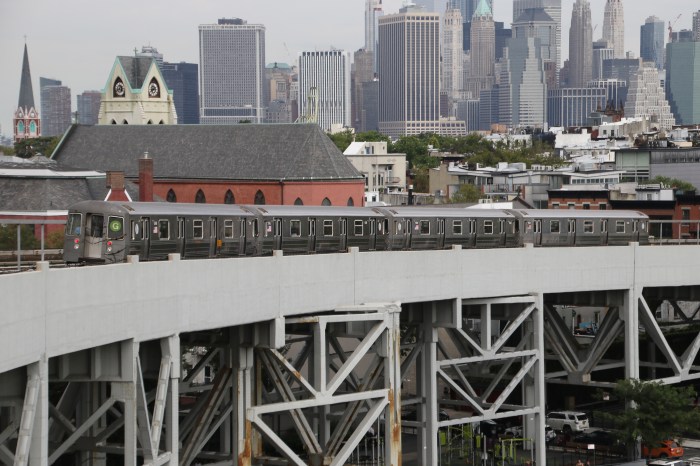Andy Byford — the city’s top transit honcho — announced his impending resignation on Thursday, leaving local public-transportation advocates fearful about the fate of an upcoming borough-wide redesign of Brooklyn’s bus network, which is now expected to move forward without its chief proponent.
“We’re extremely concerned about every borough [bus] redesign,” said Jaqi Cohen, the campaign director of Straphangers Campaign. “For the last 50 years, buses hadn’t been made a priority. Andy was the first to champion such change and the plans really took root under him.”
Byford will officially leave his post as President of the Metropolitan Transportation Authority’s New York City division on Feb. 21, but the redesign of Kings County’s busses only just got rolling — and its success now hinges on his yet-unannounced successor, according to Cohen.
“It’s very contingent on who is at the helm and leading this endeavor,” she said. “The improvements could be up for renegotiation.”
The ball is now in Governor Andrew Cuomo’s court to ensure the successful completion of the various improvements that the transportation guru set in motion — including the bus redesign, according to another advocate.
“The bus redesign is incredibly important for Brooklyn, which has some of the oldest routes dating back to 19th-century trolley lines,” said Danny Pearlstein, a spokesman for the group Riders Alliance. “The Governor has to be held accountable that the plan unfolds. He’s on the hook for the plans.”
Officials launched the sweeping bus overhaul in October to redesign the borough’s 63 local and nine express bus lines over the coming year — which came as part of Byford’s Fast Forward plan to modernize the city’s ailing public transportation.
The agency hosted several public input sessions around the borough, and plans to release a report on the Brooklyn bus system’s existing conditions by the end of March — before developing their redesign scheme by the end of the year.
Among other priorities expected to be addressed, planners want to expand bus priority lanes, modify routes to meet today’s needs by cutting redundant routes and simplifying circuitous lines, and improve off-peak service.
The push comes as ridership has dropped 10-percent and 14-percent since 2016 for express and local buses, respectively.
The average vehicle speeds also ailes at a sluggish 7.7 miles-per-hour, according to the agency.
Other borough bus redesigns have drawn heated criticism from residents and politicians — such as the neighboring Queens revamp, where local lawmakers slammed the agency’s plans for cutting service in transit-poor sections of the borough.
In Brooklyn, cuts made to the B38, B54, and the B46 — the borough’s busiest route — have already led to demonstrations from angry straphangers ahead of the revamp.
Lisa Daglian, the executive director of the Permanent Citizens Advisory Committee to the MTA, said she was confident that the Authority’s acting head of buses, Craig Cipriano, will continue with the bus revamp — but said that officials have to keep the public involved along the way.
“As far as we know, everything points at all systems go,” said Daglian. “We’re looking to keep our eye on that the redesigns go forward with as much public involvement as possible.”
Daglian and the other advocates said they will keep a close eye on who the agency appoints to replace Byford — noting that his successor will have big shoes to fill.
“We’re living in a time of uncertainty,” Daglian said. “He’s put a great team into place and we’re hopeful that someone from his team will come on and take over.”
















